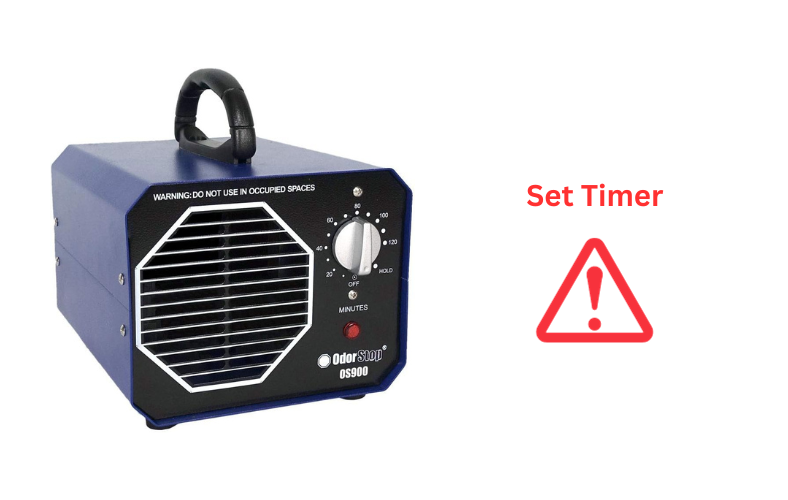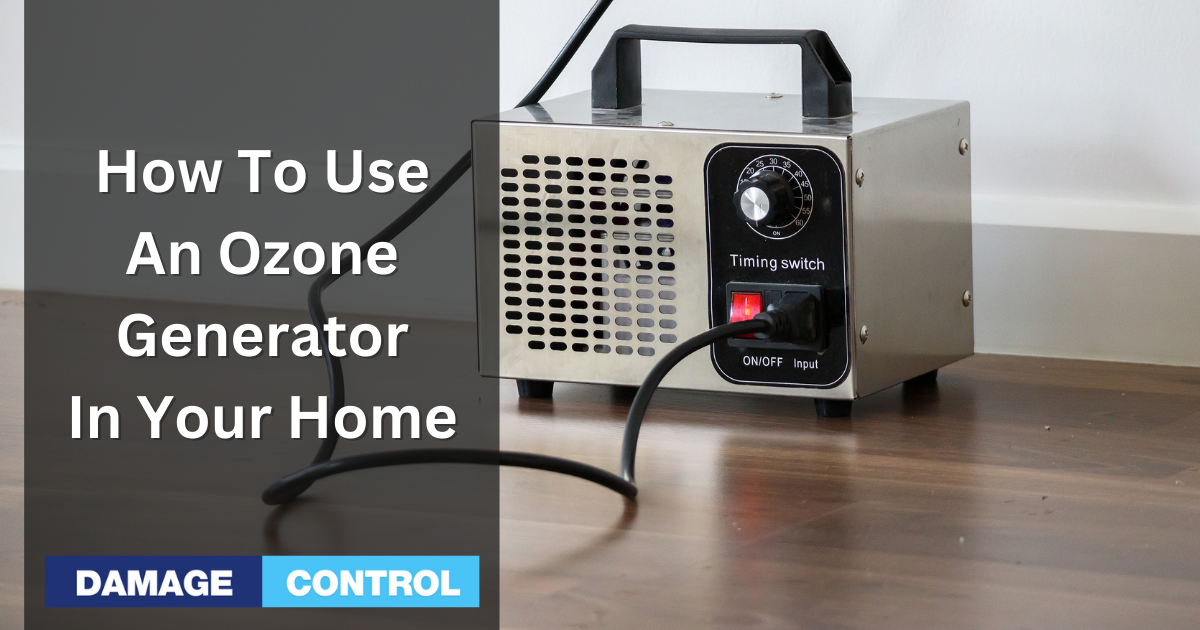In today’s health-conscious world, homeowners are constantly seeking ways to maintain a clean and safe living environment.
Ozone generators have emerged as a popular solution for neutralizing odors, purifying air, and killing mold and bacteria.
This article provides a comprehensive guide on how to safely use an ozone generator within your home, offering expert advice to ensure that you are maximizing the benefits of this technology while minimizing any associated risks.
What Is Ozone?
Whenever you hear ozone, you may think of the ozone layer surrounding the earth. This layer is very good and vital for our survival.
The atmosphere blocks most of the sun’s harmful ultraviolet rays that could do us a lot of harm.
This is necessary for us to keep living without many problems from our great big star, but ozone can still be dangerous to us. The phrase “good up high, bad nearby” was coined by the Environmental Protection Agency when it comes to ozone.
Ozone is a molecule composed of three oxygen atoms, represented chemically as O3. It is a pale blue gas with a distinct, sharp smell.
While the oxygen we breathe in our daily lives is composed of two oxygen atoms (O2), ozone's third oxygen atom makes it a powerful oxidizing agent.
It will react readily with other substances, making it highly effective at breaking down pollutants, odors, and microorganisms.
These properties make it a great choice for removing odors in the air around you. However, it will also eliminate bugs, viruses, and other things if it runs long enough.
It takes about 1.5 to 3 hours to deodorize a room in most cases, but you may need to repeat the process for stubborn odors that linger after the first treatment cycle. The word “cycle” is critical to understand. We know of auto detailers to remove smoke odors from used cars, and if they are allowed to keep the vehicle overnight, they can run multiple cycles over two days.
Ozone generators also have timers so you can open the window slightly, set it, leave the room or car, close the door, and walk away until it's completed its cycle, including the 3 hours for it to convert back to oxygen.
What Are The Dangers Of Ozone?
Because ozone is highly reactive to living things, it does some weird stuff to our respiratory system. This system includes our lungs, our air passages, and sinuses.
When ozone is breathed in, it causes our lungs to become unable to process it and slowly damages the interior lining. It tries to connect with the cells inside and inflates your lungs, causing uncomfortable swelling and burning sensations.
It also causes our throats and sinuses to become scratchy and uncomfortable. Those with lung diseases like asthma will also suffer more than normal people, considering it can cause reactions with these diseases.
You should never be in the same room in which you’re running an ozone generator. While these effects may not be permanent, it can cause long-lasting damage that you won’t want to deal with.
The good thing about ozone is that it doesn’t stay like that long. Ozone breaks down into normal, breathable oxygen after about 1-2 hours. The third oxygen atom breaks off.
How To Use An Ozone Generator In Your Home
Vacate The Space

Before using an ozone generator, you must remove people, plants, and animals from the space. For the same reason that ozone is useful for pest control, it can cause permanent respiratory damage to people and animals. It can be so severe as to cause death. It will also kill plants.
There is some argument on whether running an ozone generator can harm fish in an aquarium, but to be safe, it should be removed, as well.
Remove Important Items

Ozone damages metallic things, organic items such as leather, or electronics, so removing them from the space is necessary.
Electronics should be removed from the space if the ozone generator will be run for more than 1.5 hours in total time. If you have to do multiple treatments, remove electronics from the room.
Set The Timer

Your ozone generator should have a timer on it.
If it doesn’t have a timer, you only have a few options:
- Hold your breath while going in to turn it off (we do not advise this!)
- Using an electrical outlet timer like this one
- Using a smart plug that you can turn off on-demand with your phone like this one
If you have an old ozone generator that doesn't have a timer, you really should purchase one with a timer built into it instead. We have a list of the best ozone generators we've found yet that you can choose from here.
Leave, Close The Space Off, And Wait

If you're treating a single room, the room should be closed off so ozone doesn't leak into the rest of the house.
A window should be left cracked open to allow fresh oxygen to come into the room to replace what is being converted into ozone. You don't want to completely seal up the room, because the machine will run out of oxygen to convert and not be as effective.
Average Wait Times
Single Room: 1.5 Hours Per Treatment
Entire House: 3 Hours Per Treatment
Treatments should be broken up into small bursts. This should be no longer than 1.5 hours at a time in most cases when you're using the correct size unit for the space.
Once each cycle is completed, let the room clear and check for odors. If the odor remains, do another burst treatment and repeat until the job is completed.
Total treatment times should last at least 1.5 to 3 hours on average but can last as long as 30 hours when treating an extreme situation, such as an entire abandoned, flooded, or molded home. This is to get rid of odors only; it does not clean the property.
Let The Timer Shut Off The Ozone Generator

Allow the timer to turn the ozone generator off unless you absolutely need to end the treatment early.
Again, we do not advise simply holding your breath and going inside to turn it off, especially if you're only treating a single room. You don't want to let the ozone in that room out into the rest of your home.
Wait 3 Hours For The Ozone To Convert Back To Oxygen

Even though the machine is off now, you still have to wait for the ozone in the room to convert back to oxygen before you can go back inside. Going back into that space too soon can cause severe respiratory distress and even death if you stay there too long.
If you left a crack in the window like you should have, it should be cleared in an hour and a half.
Conclusion
Ozone is dangerous, but it is one of the best things you can have for your home to remove odors. It will kill the bacteria causing the odors. It will also go as far as killing the insects that might be crawling around in unnecessary places.
Ozone generators are some of the best odor removers out there when you’ve exhausted all other options. Be sure to keep your place clean to avoid this happening in the first place, though.
However, remember that ozone is dangerous despite being a great odor remover. It is dangerous for any living thing to breathe in or consume, including humans, pets, and even plants.
Some are now attempting to build their own, and it's dangerous. It's not a good idea to build your own.
Never be in the same room whenever an ozone generator is running. If you want to do your entire house, you must find somewhere else to stay while it happens. Protect yourself and kill the smell!

